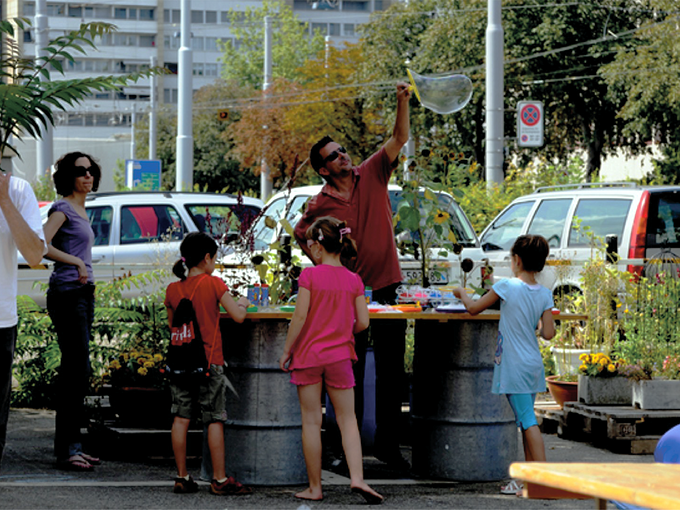In the development, planning and management of properties, we face the challenge that social objectives are difficult to measure. Unlike construction costs and greenhouse gas emissions, the quality of social contacts or identity can hardly be expressed in key figures and therefore also hardly captured in standards and certifications.
The Kalkbreite residential and commercial building (see below) was able to demonstrate new ways of making social qualities measurable with a management-by-objectives approach in accordance with SIA 112/1. The Swiss Sustainable Building Standard (SNBS) has adopted this logic and is thus a leader in the standardised assessment of social sustainability.
Core issues of social sustainability are generally accessible facilities, social mix, social prosperity, identity and design as well as well-being and health. Many economic and ecological efficiency approaches ignore these issues. Yet many ecological goals can only be achieved together with social sustainability.
The S (social) of the ESG builds a bridge to the realisation of socially sustainable goals by giving social goals a new binding force that affects every developer and owner. We expect the following goals within the framework of the EU taxonomy: decent work, decent living standards and well-being of end users, inclusive and sustainable communities and societies, the last of which primarily concerns the development of our built environment.
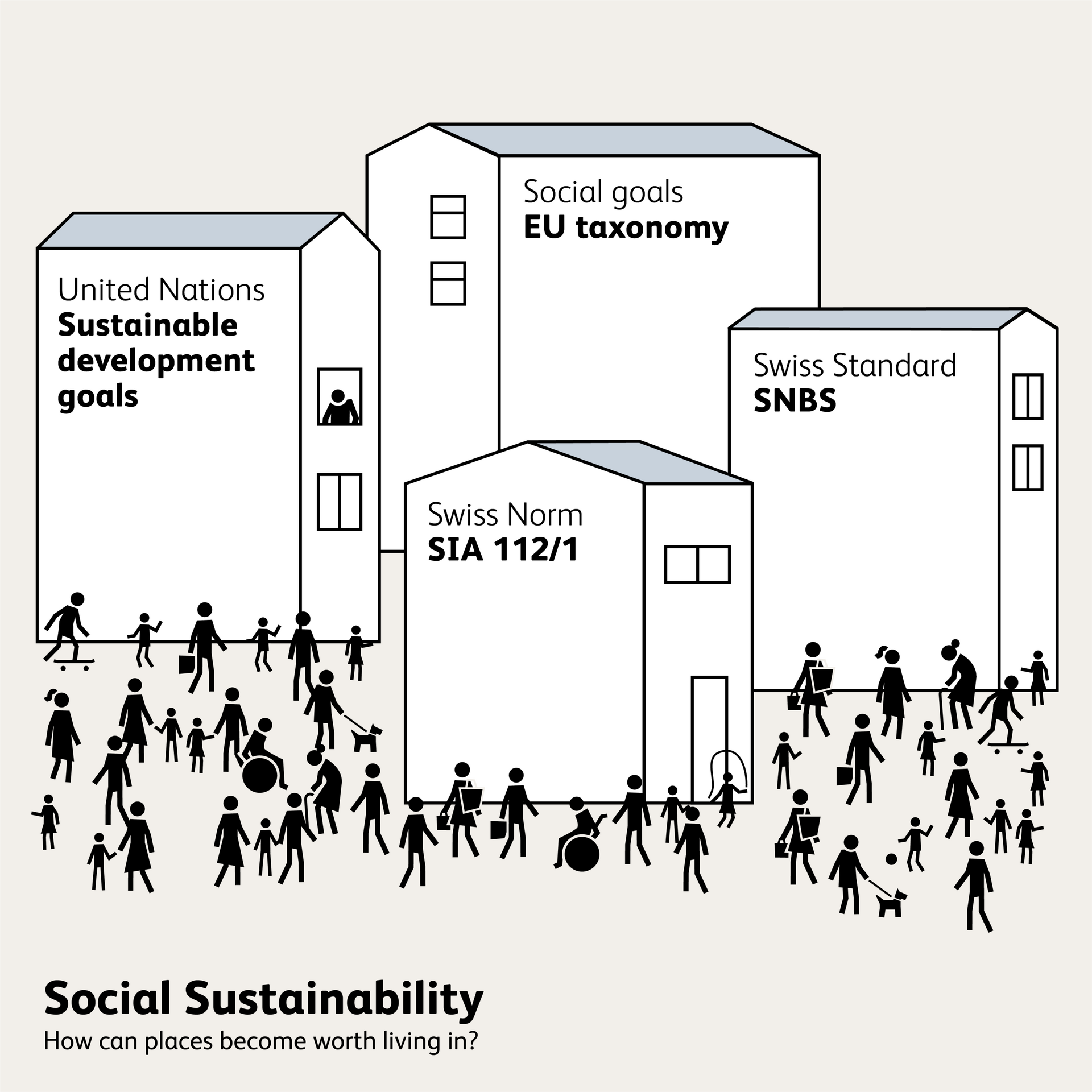
References
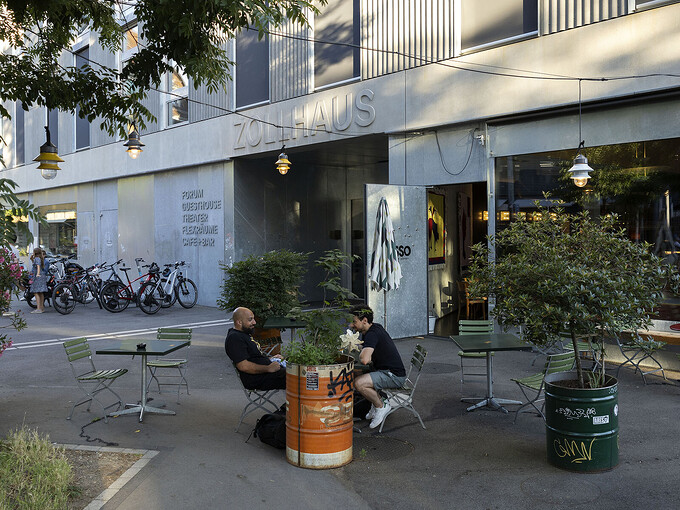
Diskussionspapier Soziale Nachhaltigkeit für Immobilien
Die Immobilienbranche hat Nachhaltigkeit als Chance und Risiko längst erkannt. Während der Fokus auf den Umweltaspekten liegt (siehe Umweltziele der EU-Taxonomie), ist die soziale Dimension noch wenig entwickelt. Mit der SIA 112/1 liegen Strukturen für die Entwicklung vor. Es gibt aber bis heute kein Rahmenwerk zur strukturierten Erfassung für Immobilien. Wüest Partner und Durable haben gemeinsam ein Diskussionspapier aufgelegt mit dem Ziel, fundierte Kriterien für soziale Nachhaltigkeit zu etablieren und langfristig deren Wirkung auf Nutzende und Immobilien messbar zu machen.
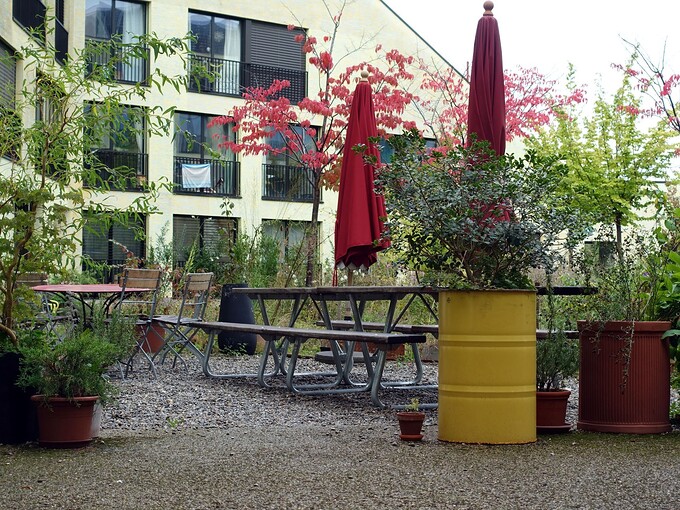
Social sustainability in SIA 112/1 Sustainable Construction
The SIA 112/1 Sustainable Construction standard addresses the three dimensions of sustainability, including social criteria. These can be divided into two groups: a) criteria related to well-being (such as noise, indoor air quality, room temperature, daylight), which are easily measurable and traditionally integrated into standards; and b) other criteria (such as social equity, social interaction, design, usability, and participation), which are not as easily measurable. Due to this difficulty in measurement, the second group is often neglected in practice. We have developed methods to address this issue.
Additionally, the usability and quality of outdoor spaces will play a crucial role in the future, particularly in the context of climate-adaptive construction.
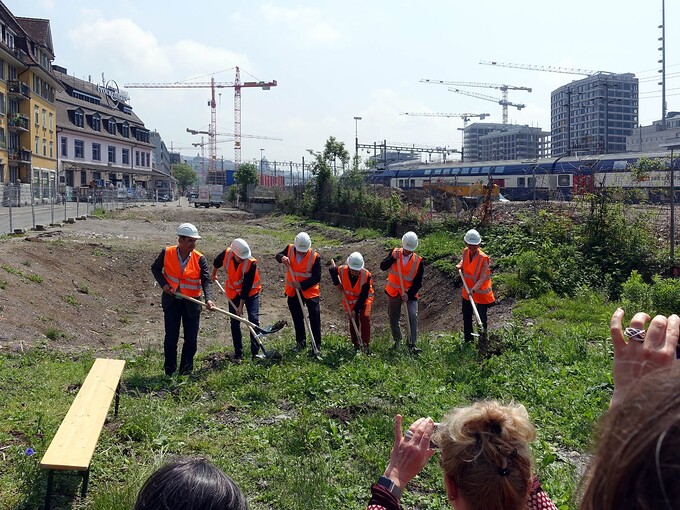
SIA task force on social sustainability
The KNU is exploring the relevance and potential of social sustainability for SIA products and has therefore initiated an task force on social sustainability. This task force consists of experts from academia and research, urban and landscape planning, non-profit and institutional developers, as well as public authorities. The group is evaluating the need for a practical guide as an accessible SIA product. This guide could later evolve into fact sheets and standards.
Jörg Lamster, as part of the KNU, established and leads this task force.

